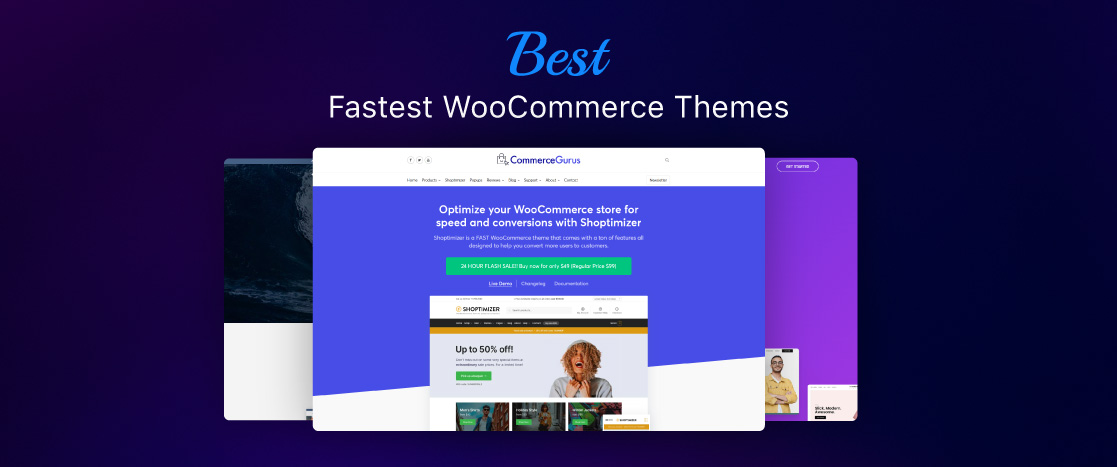
Top 10 Business Intelligence Tools You Need to Know in 2025
In the fast-paced world, businesses must navigate a complex data landscape to remain competitive. Business Intelligence (BI) tools are at the forefront of this effort, transforming raw data into actionable insights that drive strategic decisions, optimize operations, and provide a competitive edge. As BI technologies evolve, the importance of selecting the right tools becomes even more critical.
Business intelligence (BI) is like having a super-powered magnifying glass for your business. It helps you take a closer look at your data and turn it into useful information. Imagine you own an online clothing store. BI could help you understand which products are selling the best, which marketing campaigns are driving the most sales, and even which customers are likely to purchase again. This information can help you focus your efforts on the most profitable products, optimize your marketing strategies, and improve customer satisfaction.

Top 10 Business Intelligence Tools You Should Know in 2025
The top 10 business intelligence (BI) tools are listed in this section. To assist you in selecting the finest BI tool for data-driven decision-making, this list highlights the salient features, performance, and customization options of both cloud-based and on-premise solutions.
| S. No. | Names | Pricing | Best For | Free Version |
| 1 | Power BI | $10/user/month | SMBs, Enterprises | Yes |
| 2 | Tableau | $15/user/month | Data Analysts | Yes (Public) |
| 3 | Qlik Sense | $30/user/month | Data-driven teams | No |
| 4 | Looker | Custom | Google Cloud Users | No |
| 5 | Domo | Custom | Marketing, Sales | No |
| 6 | SAP Analytics Cloud | $36/user/month | Large enterprises | No |
| 7 | Sisense | Custom | Embedded analytics | No |
| 8 | Zoho Analytics | $24/user/month | Small & Mid-size Businesses | Yes (Limited) |
| 9 | Spotfire | Custom | Scientific & Pharma Analytics | No |
| 10 | Strategy | Custom | Enterprise Strategy & Planning | No |
A strong ecommerce hosting platform ensures your BI tools run smoothly, handling data processing and analytics without delays—so you can make smart business decisions faster.
Power BI
Over the years, Power BI has consistently evolved to meet the growing demands of businesses seeking to make data-driven decisions. Power BI has made significant strides, particularly in enhancing its artificial intelligence (AI) capabilities. These advancements allow users to integrate sophisticated machine learning models directly into their dashboards and reports. This means that businesses can now predict outcomes with greater accuracy, identify emerging trends more swiftly, and automate complex insights that previously required manual intervention.
Moreover, Power BI has introduced new features that make it easier for users to interact with their data in more intuitive ways. For instance, natural language processing (NLP) enhancements now allow users to ask questions about their data in plain language and receive instant, visually compelling responses. This accessibility is particularly valuable for non-technical users, democratizing data analysis across organizations.
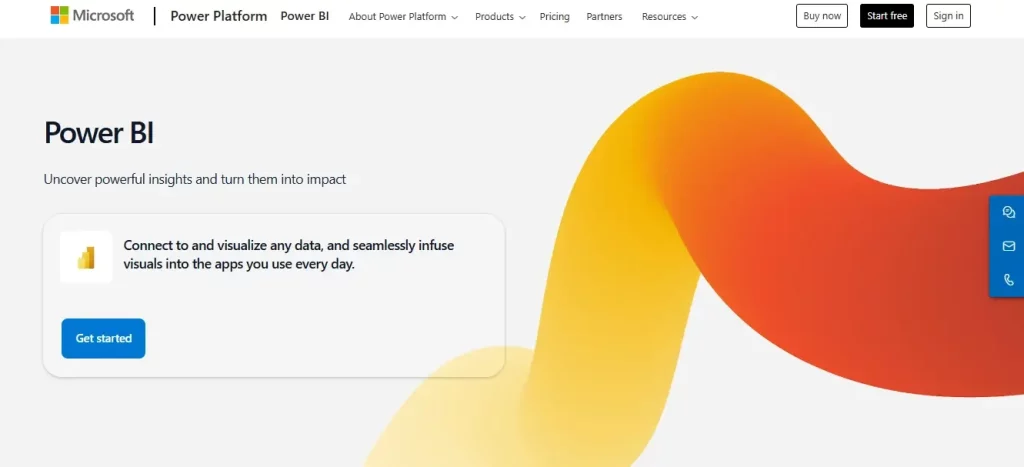
Integration and ecosystem is a cornerstone of Power BI’s continued success. One of the key reasons Power BI stands out among business intelligence tools is its seamless integration with the broader Microsoft ecosystem. Power BI works effortlessly with other Microsoft tools such as Excel, Azure, and Teams, creating a unified platform that simplifies the entire data management process.
As a side note, Microsoft Clarity is also a great tool for ecommerce store owners as it tells you a lot about the behavior of your visitors.
Tableau
Tableau continues to be a trailblazer in making data accessible to everyone within an organization, regardless of their technical expertise. Tableau’s core mission has always been to simplify data analysis, it remains a leader in this regard. By prioritizing user-friendly interfaces and powerful visualizations, Tableau empowers users at all levels to engage with data, make informed decisions, and contribute to the organization’s overall strategy.
Tableau’s commitment to data democratization is more evident than ever. The platform is designed to break down barriers between complex data and those who need to understand it. By providing tools that translate intricate datasets into easy-to-understand visuals, Tableau ensures that data-driven decision-making is not limited to data scientists or IT professionals. Instead, it becomes a part of the everyday workflow for employees across various departments.
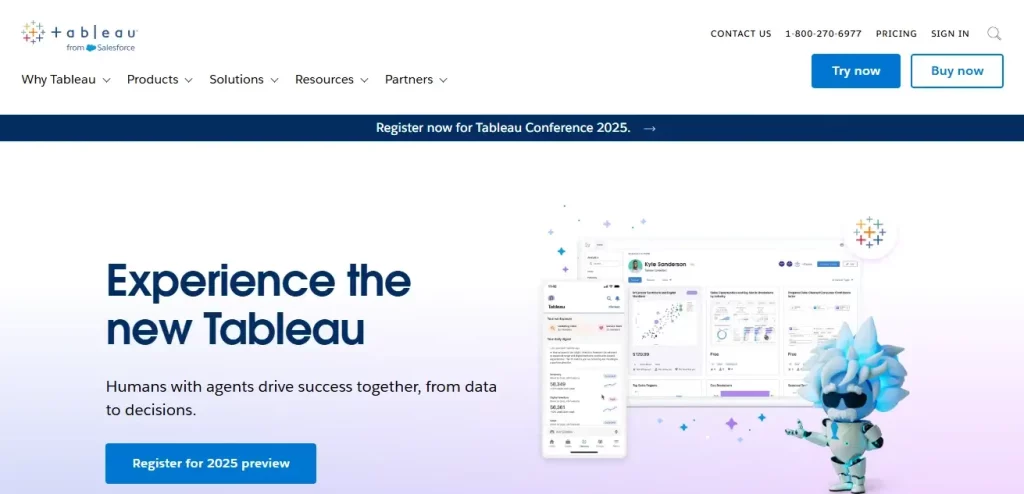
In addition to these analytical improvements, Tableau has also enhanced its collaboration tools. These updates make it easier for teams to work together on data projects, share insights, and make collective decisions. By streamlining the collaboration process, Tableau ensures that teams can align more effectively and act on data-driven insights faster. These new features and enhancements solidify Tableau’s position as a leading tool in business intelligence and data visualization.
Qlik Sense
Qlik’s associative analytics model allows users to explore data in a non-linear manner, unlike traditional linear models that can limit analysis. This innovative approach enables users to uncover hidden relationships and insights within their data, encouraging more in-depth exploration. By allowing users to make connections across various data points, Qlik Sense empowers them to ask more complex questions and gain richer, more meaningful insights, ultimately driving better decision-making.
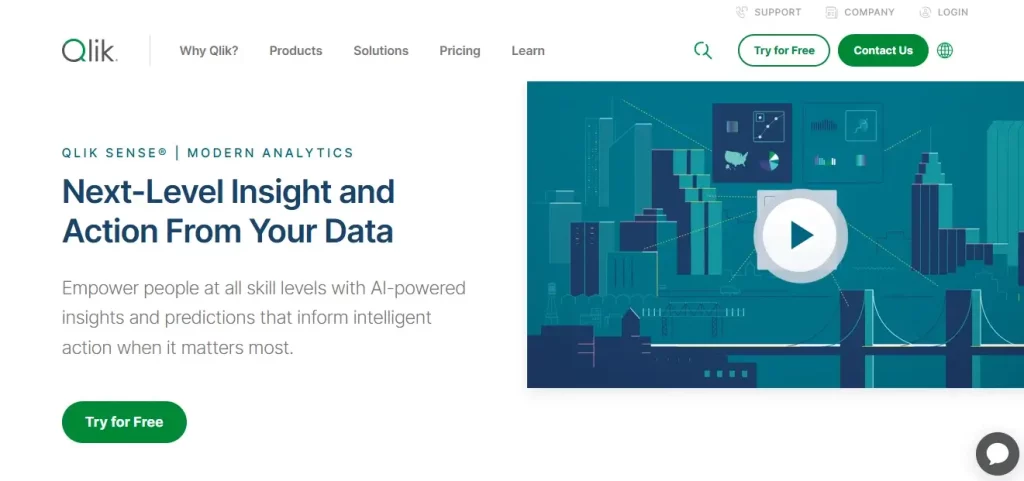
Focus on Data Literacy Initiatives reflects Qlik Sense’s commitment to enhancing data literacy. Recognizing the importance of making analytics accessible to everyone, Qlik offers comprehensive resources and training programs designed to improve data literacy across organizations. These initiatives help employees at all levels understand and leverage data effectively, fostering a culture where data-driven decision-making becomes the norm. By prioritizing inclusivity in analytics, Qlik Sense is helping businesses build stronger, more informed teams that can navigate the complexities of modern data with confidence.
Looker
Looker has a unique approach to data modeling. LookML, Looker’s proprietary modeling language, allows businesses to define and manage their data models in a centralized, consistent manner. This enables organizations to create tailored data experiences that align with their specific needs, ensuring that users receive relevant and accurate insights. By centralizing data definitions, LookML helps streamline data analysis across the organization, providing a powerful and flexible framework that enhances the overall effectiveness of business intelligence efforts.
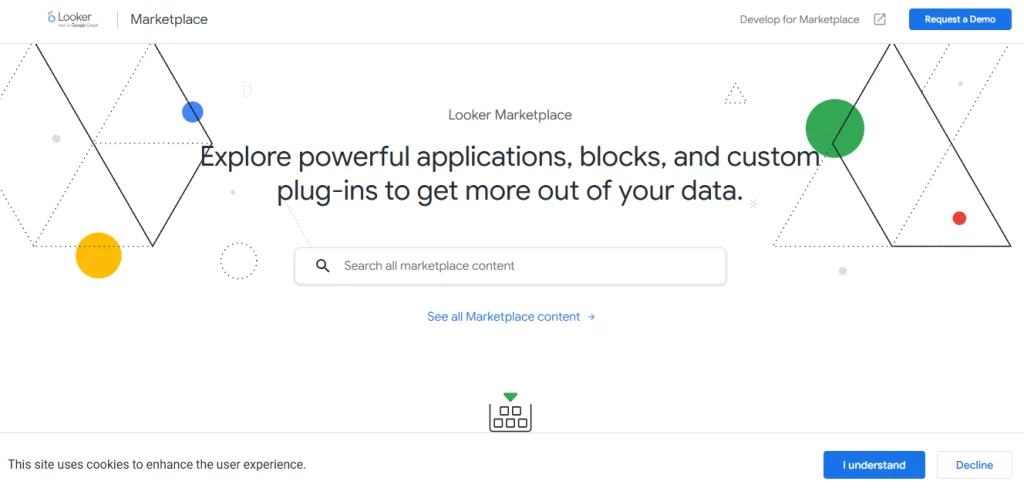
Looker provides robust data governance tools that allow businesses to manage and control their data effectively, which is essential in industries with strict regulatory requirements. These tools help ensure that data is reliable and secure, supporting organizations in their compliance efforts while enabling informed decision-making. Looker’s focus on data governance makes it a top choice for enterprise BI solutions, particularly for companies that must adhere to stringent data management standards.
Domo
Domo remains a leader in real-time data analytics, providing users with immediate access to live data from any device, anywhere. This capability is crucial for businesses that need up-to-the-minute insights to make swift, informed decisions.
By delivering real-time data, Domo empowers organizations to respond quickly to emerging trends and operational changes, enhancing their ability to stay competitive and agile in a fast-paced market.
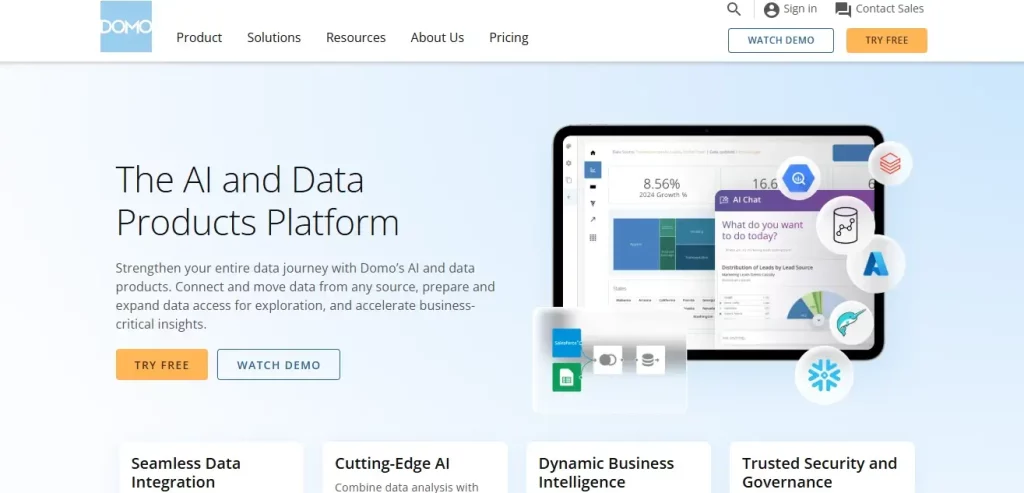
The latest updates to Domo’s platform include improved data-sharing features and interactive dashboards that facilitate better collaboration among team members. These innovations allow users to share insights seamlessly and work together more effectively on data projects.
By enhancing collaborative capabilities, Domo supports more coordinated decision-making and ensures that teams can leverage real-time data to drive strategic initiatives and achieve common goals.
SAP Analytics Cloud
Bringing together business intelligence, planning, and predictive analytics underscores SAP Analytics Cloud’s strength in providing an integrated platform for comprehensive data management. As one of the best business intelligence tools available, SAP Analytics Cloud combines business intelligence, planning, and predictive analytics into a single solution.
This integration allows organizations to streamline their data processes from initial analysis through to forecasting and strategic planning. By centralizing these functions, businesses can achieve a more cohesive approach to data management, ensuring consistency and efficiency in their decision-making processes.
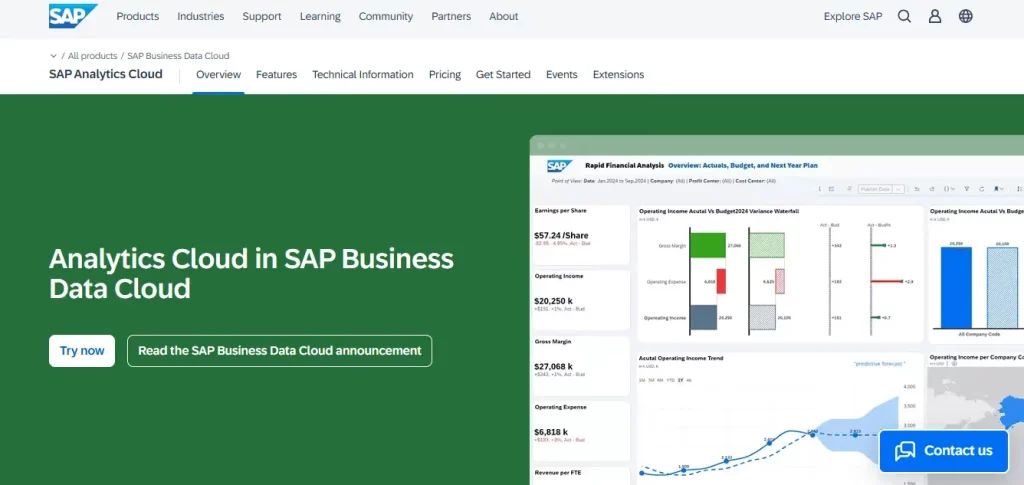
SAP enhanced its platform with new industry-specific templates and features designed to address the unique analytical needs of sectors such as manufacturing, finance, and retail.
These specialized tools enable businesses to apply best practices and industry-specific insights directly within the platform, making SAP Analytics Cloud a preferred choice for organizations seeking targeted and effective business intelligence solutions. This focus on industry relevance helps businesses leverage their data more effectively and drive better outcomes in their respective fields.
Sisense
Sisense excels in embedding powerful business intelligence features directly into custom applications, offering organizations the flexibility to integrate and adapt BI tools to their specific requirements. This capability is crucial for businesses that need to embed analytics within their existing systems or create unique, application-specific dashboards. By allowing for extensive customization, Sisense ensures that organizations can deliver relevant insights and analytics in the context of their own applications, enhancing the overall effectiveness and usability of their BI solutions.

AI-Driven Insights and Automation underscore Sisense’s advancement in integrating artificial intelligence into business intelligence tools. Sisense continues to enhance its platform with AI-driven analytics that automate the process of discovering trends, anomalies, and opportunities. This automation eliminates the need for manual analysis, making sophisticated insights accessible to users without technical expertise. By leveraging AI, Sisense not only speeds up the analytics process but also empowers a broader audience to benefit from advanced data insights, facilitating more informed decision-making across the organization.
Zoho Analytics
Zoho Analytics offers an extensive range of business intelligence tools at a cost-effective price, making it accessible to businesses with budget constraints. Despite its affordability, it provides robust capabilities, including data visualization, reporting, and predictive analytics.
This balance between cost and functionality ensures that SMEs can leverage powerful BI tools without compromising on essential features, helping them make data-driven decisions and drive growth effectively.
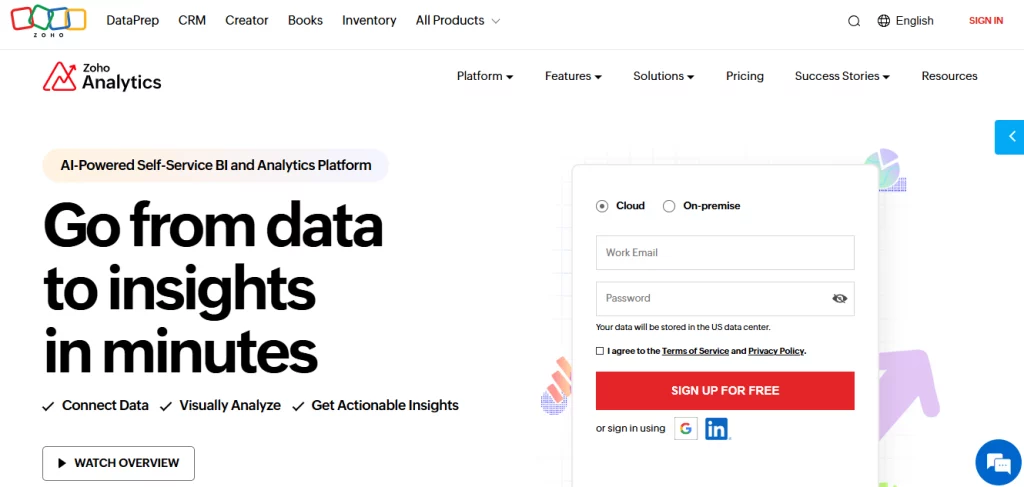
Cross-Platform Integration and Usability highlight Zoho Analytics’ versatility in integrating with various software solutions. Zoho Analytics excels in connecting with a wide range of platforms, including CRM systems, ERP software, and other business applications. This broad integration capability ensures a seamless flow of data across different systems, enhancing usability and streamlining the analytics process.
By supporting diverse platforms, Zoho Analytics enables businesses to consolidate their data from multiple sources, providing a comprehensive view that aids in more informed decision-making and efficient data management.
Spotfire
Spotfire continues to excel in providing advanced tools for data modeling, forecasting, and scenario analysis. These predictive capabilities enable businesses to anticipate future trends, identify potential opportunities, and mitigate risks before they materialize.
By harnessing these tools, organizations can stay ahead of market dynamics and make proactive, informed decisions, giving them a significant competitive edge in their respective industries.
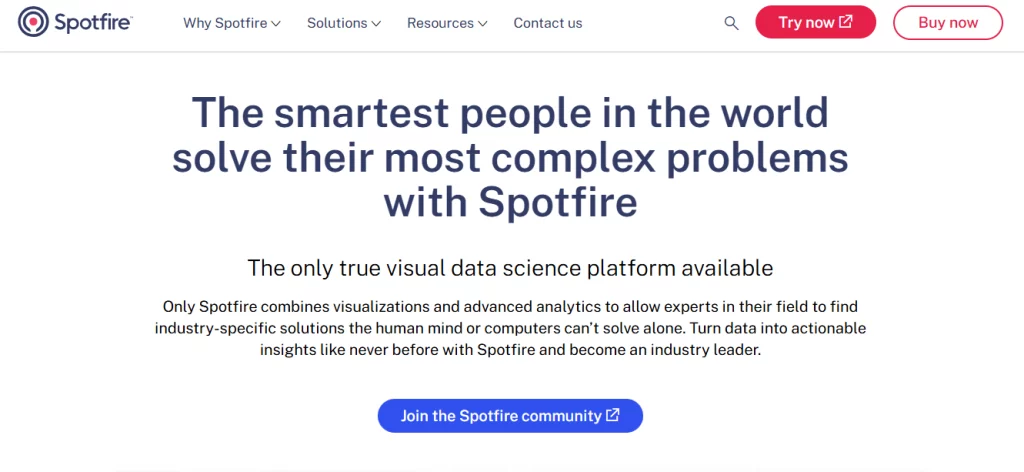
Spotfire introduced new functionalities designed to address the distinct needs of industries such as energy, healthcare, and finance. These industry-specific enhancements enhance Spotfire’s utility by providing specialized tools and analytics that cater to the unique challenges and requirements of each sector.
This focus on innovation and industry relevance reinforces Spotfire’s position as a leading business intelligence tool, capable of delivering valuable insights across diverse applications.
Strategy
Strategy’s innovative approach to enterprise analytics can be seen in its Hyperintelligence feature. This tool revolutionizes how users access insights by embedding analytics directly into everyday applications like email, web browsers, and mobile apps. Hyperintelligence provides immediate, contextual insights without requiring users to leave their current workflows. This seamless integration allows users to make informed decisions quickly and efficiently, enhancing productivity by delivering relevant data insights right when they are needed.

Focus on Scalability and Enterprise Security highlights Strategy’s strengths in handling large-scale enterprise needs. Known for its scalable architecture, Strategy is a top choice for large organizations requiring robust business intelligence solutions. The platform continues to emphasize scalability, enabling it to manage extensive data volumes effectively. Additionally, Strategy maintains a strong focus on enterprise security, implementing advanced measures to safeguard sensitive information. This dual focus on scalability and security ensures that enterprises can rely on Strategy for comprehensive, secure analytics across their operations.
Conclusion
As we’ve explored, the top 10 business intelligence tools of 2025 offer a range of features and capabilities to suit different business needs. Whether you’re looking for cloud-based solutions, advanced AI analytics, or industry-specific applications, there’s a BI tool that can meet your requirements.
Looking ahead, the future of BI is being shaped by trends like AI-driven analytics, real-time processing, and the rise of embedded BI solutions. These innovations are making BI tools more powerful and accessible, enabling businesses to gain deeper insights and make more informed decisions.
As AI becomes increasingly integrated into BI tools, its role in delivering actionable insights will continue to grow. Businesses that embrace these advancements will be better positioned to stay ahead of the competition and navigate the challenges and beyond.
To stay ahead, businesses should invest in the latest BI tools and best practices, ensuring they are equipped to harness the full potential of their data. By making informed decisions based on the insights provided by these tools, businesses can drive growth, optimize operations, and maintain a competitive edge in the evolving landscape.
FAQs
What is business intelligence life cycle?
The business intelligence cycle consists of six main phases: understanding what data is required, gathering and analyzing that data, and communicating and acting upon the insights discovered from the analysis.
What is a business intelligence agent?
Essentially serving as a digital assistant for data-driven choice-making within an organization, a “business intelligence agent” is a software program or system that uses artificial intelligence (AI) to automatically gather, analyze, and interpret vast amounts of business data. It offers leaders actionable information and ideas without the need for traditional intervention; it can spot patterns, trends, and anomalies in real time, enabling businesses to respond swiftly to opportunities and changes in the market.

